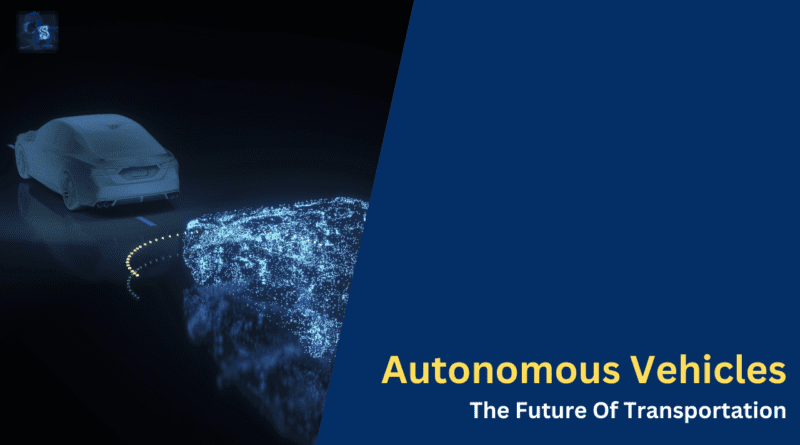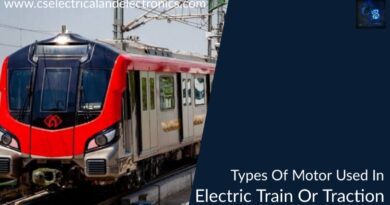Autonomous Vehicles: The Future Of Transportation
Hello, guys, welcome to our blog. Here in this article, we will discuss Autonomous Vehicles and the future of transportation.
Ask questions if you have any electrical, electronics, or computer science doubts. You can also catch me on Instagram – CS Electrical & Electronics.
Also, read:
- 10 Tips To Maintain Battery For Long Life, Battery Maintainance
- 10 Tips To Save Electricity Bills, Save Money By Saving Electricity
- 100 (AI) Artificial Intelligence Applications In The Automotive Industry
Autonomous Vehicles
Autonomous vehicles, also known as self-driving cars or driverless cars, represent a paradigm shift in the automotive industry, promising a future where transportation is not only automated but also safer, more efficient, and accessible. The development and deployment of autonomous vehicles have captured the imagination of technology enthusiasts and raised significant questions about the impact on society, infrastructure, and the very nature of mobility.
01. Definition and Levels of Autonomy:
Autonomous vehicles refer to vehicles equipped with advanced sensors, artificial intelligence (AI), and computing systems that enable them to navigate and operate without human intervention. The Society of Automotive Engineers (SAE) categorizes autonomy into levels ranging from Level 0 (no automation) to Level 5 (full automation), where the vehicle requires no human input.
02. Technological Components:
Autonomous vehicles rely on a complex array of technologies, including radar, lidar, cameras, GPS, and sophisticated algorithms powered by AI and machine learning. These components work together to perceive the vehicle’s environment, make decisions, and control its movements with precision.
03. Safety and Accident Prevention:
One of the primary motivations behind autonomous vehicles is the potential to significantly improve road safety. Advanced sensors and real-time data analysis enable vehicles to detect and respond to their surroundings faster than human drivers. The goal is to reduce accidents caused by human error, which is a leading factor in road incidents.
04. Challenges and Regulatory Framework:
The development and deployment of autonomous vehicles come with challenges. Ensuring the safety of passengers and pedestrians, addressing ethical considerations in decision-making algorithms, and establishing a regulatory framework that accommodates autonomous technologies are critical areas of focus for industry stakeholders and policymakers.
05. Environmental Impact and Efficiency:
Autonomous vehicles have the potential to enhance traffic flow, reduce congestion, and optimize routes, leading to improved fuel efficiency and reduced emissions. The coordination of autonomous vehicles can contribute to more efficient use of road infrastructure and a decrease in overall energy consumption.
06. Accessibility and Mobility Services:
The advent of autonomous vehicles has sparked discussions about redefining mobility services. Ride-hailing companies and transportation-as-a-service models envision fleets of autonomous vehicles providing on-demand transportation. This shift has implications for urban planning, public transportation, and the concept of car ownership.
07. Ethical and Social Implications:
Autonomous vehicles raise ethical questions related to decision-making in critical situations. Algorithms must navigate complex scenarios, including moral dilemmas, and prioritize the safety of occupants, pedestrians, and other road users. Addressing these ethical considerations is crucial for gaining public trust and acceptance.
08. Research and Development:
Major technology and automotive companies, including Tesla, Waymo, and traditional automakers, are actively investing in research and development to advance autonomous vehicle technology. Ongoing testing, simulation, and collaborations with technology partners contribute to the evolution of these vehicles.
09. Public Perception and Adoption:
The acceptance of autonomous vehicles among the general public remains a significant factor in their widespread adoption. Building trust, addressing concerns about safety and security, and educating the public about the benefits of autonomous technology is essential for the successful integration of these vehicles into society.
In conclusion, autonomous vehicles represent a transformative leap into the future of transportation. While challenges and considerations abound, the potential benefits in terms of safety, efficiency, and accessibility are driving the relentless pursuit of autonomous technology. As the road to autonomy unfolds, it is a journey marked by innovation, collaboration, and the quest to redefine the way we move and experience mobility.
Evolution of Autonomous Vehicles
The evolution of autonomous vehicles has been a remarkable journey, marked by advancements in technology, extensive research and development, and a vision to transform the way we perceive and experience transportation. The progression of autonomous vehicles can be traced through several key stages, each contributing to the gradual realization of a future where vehicles can navigate and operate without human intervention.
01. Early Concepts and Prototypes:
The concept of autonomous vehicles can be traced back to the early 20th century, with visionary thinkers envisioning a future where machines could take over the task of driving. Early experiments, including radio-controlled vehicles and automated guidance systems, laid the foundation for the development of self-driving technologies.
02. DARPA Challenges and Milestones:
The Defense Advanced Research Projects Agency (DARPA) played a pivotal role in catalyzing the development of autonomous vehicles. DARPA’s Grand Challenges, starting in 2004, provided a platform for researchers and engineers to showcase their autonomous vehicle prototypes. These challenges spurred innovation and marked significant milestones in the field.
03. Rise of Machine Learning and AI:
The evolution of autonomous vehicles is closely tied to the advancements in machine learning and artificial intelligence (AI). The ability to process vast amounts of data, recognize patterns, and make real-time decisions became critical components in developing self-driving capabilities. Machine learning algorithms enable vehicles to learn from their experiences and improve over time.
04. Testing and Validation:
Extensive testing and validation became imperative to ensure the safety and reliability of autonomous vehicles. Companies engaged in rigorous testing programs, conducting trials in controlled environments and real-world scenarios. Simulations, sensor testing, and scenario-based evaluations played a crucial role in refining the technology.
05. Commercialization and Industry Investments:
The 2010s witnessed a surge in industry investments and a shift toward commercialization. Major technology companies and traditional automakers began investing heavily in autonomous vehicle development. Initiatives from companies like Waymo (formerly a project within Google) and Tesla brought autonomous features to the market, gradually introducing consumers to the concept.
06. Regulatory Framework and Standards:
The development of autonomous vehicles prompted the need for a regulatory framework to ensure safety, accountability, and adherence to standards. Governments and regulatory bodies started addressing the legal and ethical aspects of autonomous driving, laying the groundwork for the integration of self-driving vehicles into existing traffic systems.
07. Advancements in Sensor Technologies:
Sensor technologies, such as lidar, radar, and cameras, underwent significant advancements to enhance the perception capabilities of autonomous vehicles. The integration of multiple sensors allowed vehicles to gather comprehensive and real-time data about their surroundings, improving navigation and decision-making.
08. Challenges and Ethical Considerations:
Alongside technological progress, the evolution of autonomous vehicles brought forth challenges and ethical considerations. The industry grappled with issues related to decision-making algorithms, liability in case of accidents, and public perception. Addressing these challenges became crucial for the responsible development and deployment of autonomous technology.
09. Ongoing Innovations and Future Prospects:
The evolution of autonomous vehicles continues with ongoing innovations and research. Companies are pushing the boundaries with the development of Level 4 and Level 5 autonomous systems, aiming for vehicles capable of fully autonomous operation in diverse and complex environments. The future holds promises of increased safety, improved traffic flow, and transformative changes in mobility.
As autonomous vehicles evolve from experimental prototypes to tangible components of the transportation landscape, the journey underscores the intersection of technology, regulation, and societal acceptance. While challenges persist, the relentless pursuit of safer, more efficient, and autonomous mobility signals a future where vehicles share the road with advanced and intelligent machines.
The Future of Transportation
The future of transportation is poised for revolutionary transformations, driven by technological innovations, environmental considerations, and a quest for more efficient and sustainable mobility solutions. As societies grapple with challenges such as urbanization, climate change, and the need for increased accessibility, the transportation landscape is evolving to meet these demands. Here are key facets shaping the future of transportation:
01. Electric and Autonomous Vehicles: The proliferation of electric vehicles (EVs) is reshaping the automotive industry, providing a cleaner and more energy-efficient alternative to traditional internal combustion engines. Simultaneously, the integration of autonomous driving technologies is paving the way for self-driving cars, promising safer and more efficient transportation systems.
02. Multimodal Integration: The future of transportation embraces the concept of multimodal integration, where various modes of transportation seamlessly connect to provide end-to-end mobility solutions. Commuters can transition effortlessly between public transit, shared bicycles, electric scooters, ride-sharing services, and even autonomous shuttles, optimizing travel efficiency.
03. Hyperloop and High-Speed Rail: Hyperloop technology and high-speed rail systems represent futuristic modes of long-distance transportation. Hyperloop pods propelled through low-pressure tubes at high speeds, aim to reduce travel times significantly. Similarly, high-speed rail networks promise rapid, efficient, and environmentally friendly connectivity between cities.
04. Urban Air Mobility (UAM): The exploration of urban air mobility envisions the integration of electric vertical takeoff and landing (eVTOL) aircraft for short-distance aerial transportation within urban environments. UAM could alleviate congestion and provide swift, point-to-point transit options, transforming the way people navigate cities.
05. Sustainable and Smart Cities: Future transportation is closely linked to the development of sustainable and smart cities. Urban planning will prioritize pedestrian-friendly environments, green spaces, and efficient public transportation systems. Smart infrastructure, powered by data analytics and the Internet of Things (IoT), will enhance traffic management, reduce congestion, and improve overall transportation efficiency.
06. Connected and Intelligent Vehicles: The future envisions a network of connected vehicles communicating with each other and with smart infrastructure. Intelligent transportation systems will optimize traffic flow, enhance safety through real-time data sharing, and enable vehicle-to-everything (V2X) communication, contributing to a more coordinated and responsive transportation ecosystem.
07. E-Mobility and Micro-Mobility Solutions: The rise of e-mobility encompasses not only electric cars but also micro-mobility solutions like e-scooters and e-bikes. These compact, energy-efficient modes of transportation offer last-mile connectivity and reduce reliance on traditional automobiles for short-distance travel.
08. Environmental Sustainability: A central theme in the future of transportation is environmental sustainability. The shift towards zero-emission vehicles, renewable energy sources for charging infrastructure, and eco-friendly transportation policies aims to mitigate the environmental impact of traditional transportation systems.
09. Public-Private Partnerships and Innovations: Collaboration between public and private entities is crucial for implementing innovative transportation solutions. Governments, industry stakeholders, and technology companies must work together to create policies, invest in research and development, and deploy cutting-edge technologies that shape the future of transportation.
This was about “Autonomous Vehicles: The Future of Transportation “. I hope this article may help you all a lot. Thank you for reading.
Also, read:
- What is XCP (Universal Measurement and Calibration Protocol)? Introduction, Working, Purpose, Applications
- What Is SIL Testing, Software-In Loop, Working, Purpose
- UDS (Unified Diagnostic Services) Tutorials For Automotive Engineers
- 100 + Electrical Engineering Projects For Students, Engineers
- 1000+ Control System Quiz, Top MCQ On Control System
- 1000+ Electrical Machines Quiz, Top MCQs On Electrical Machines
- 1000+ MATLAB Simulink Projects For MTech, Engineering Students
- 50 Tips To Save Electricity At Home, Shop, Industry, Office
Author Profile
- Content Writer








